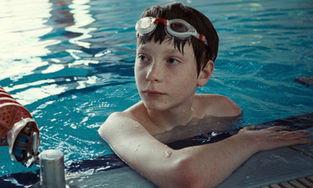Quick Reviews: 'The Banshees Of Inisherin', 'TÁR' | Lonely Colin Farrell, Cate Blanchett Conducts
- S.J.

- Mar 1, 2023
- 3 min read
Updated: Aug 14, 2024

THE BANSHEES OF INISHERIN
Finally we have a new movie for fighting tyrants that tell you not to be such an ass since sometimes it seems like a wise choice to be more like Jenny the donkey than some Irish lads drunk off their asses. Writer-director Martin McDonagh's The Banshees Of Inisherin follows two of them in 1923, examining break-ups, politeness, masculinity and mortality. Pádraic (Colin Farrell) finds his world shaken up all of the sudden as his best friend and drinking mate Colm (Brendan Gleeson) tells him that he no longer wishes to be Pádraic's friend, finding him to be dull and wishing to focus more on his composing. Pádraic tries to fill the void for a while with his sister Siobhán (Kerry Condon) and young man named Dominic (Barry Keoghan) but then when he tries to reconnect with Colm, Colm threatens to cut off his own fingers if Pádraic doesn't let him be.
McDonagh finds an interesting little corner in the cinematic world involving break-ups and his writing balances the tragic and comedic elements with skill and a lot of entertainment value. There are some oddly staged moments in the story that include either animals or revenge but the characters are so strong that even those little problems don't affect the present. Pádraic, Colm and Siobhán are all wonderfully realised and you get a feeling that there is a past for each of them, whether they share some of that past or they're doing their own thing.
There's no bad apple in the bunch but Farrell and Condon especially make their characters feel as real as death, both actors' performances showing a rare kind of vulnerability, wit and sincerity in any given moment. DoP Ben Davis' warm, intimate lighting and Eimer Ní Mhaoldomhnaigh's costumes help to develop the specificity of everyone's lives, inviting you to a place that challenges one's kindness, ego and sense of belonging.
Smileys: Kerry Condon, Colin Farrell, screenplay, characterisation
Frowneys: Minor issues with story
4.5/5

TÁR
What in TárNation is happening here? Hostile work environments and aggressive classical music, that's what's happening. Psycho-drama TÁR, written and directed by Todd Field in his return of sorts after a significant time away from films, stars Cate Blanchett as the eponymous Lydia Tár, EGOT-winning composer and esteemed conductor of Berlin Philharmonic orchestra.
We follow Tár's life in the crossroads as she's writing new compositions, teaching at Juilliard, living a somewhat domestic life with her girlfriend Sharon (Nina Hoss) and Sharon's daughter Petra (Mila Bogojevic), readying a release of her book and a live recording of the orchestra when a former player of hers dies by suicide after having sent an avalanche of grim emails to Lydia which she has told her assistant Francesca (Noémie Merlant) to ignore. Later, her career comes under fire when a video of her questionable teaching manners and accusations of sexual predation hit social media and press.
After a stodgy opening scene, the film develops into a purposefully exasperating character piece that exists as a platform for Blanchett to really flex her acting muscles. By drawing from a layered, contradictory personality that is her character, Blanchett dazzles in this spotlight as she changes masks and voices, figuratively, to be intimidating, troubled and convincing all at the same time. Field's already solid writing rises to next level constantly because of the acting, including by Merlant who has the tough role of showing the power imbalance on her face and body. In scenes between her and Blanchett, Field tackles the film's themes most effectively, whether that's worth world-class artistry, abuse of power, control or accountability.
Lydia Tár's sailing on stormy seas is captured well in the movie's soundscapes, notably in the mix that blends exceptionally well-recorded music (by actors, the orchestra and composer Hildur Guðnadóttir), Tár's own inner time bomb and her shifting reality. Slightly dragging in that regard is only Monika Willi's editing which needed more dynamics—though maybe it didn't have the right shots by cinematographer Florian Hoffmeister to work with in the first place—as moments like that opening scene and few later long takes aren't as propulsive as the sound and music. However, Willi and Field do find an interesting cut to black at the end.
Smileys: Cate Blanchett, characterisation, sound mixing, Noémie Merlant
Frowneys: Some issues with editing
4.5/5











